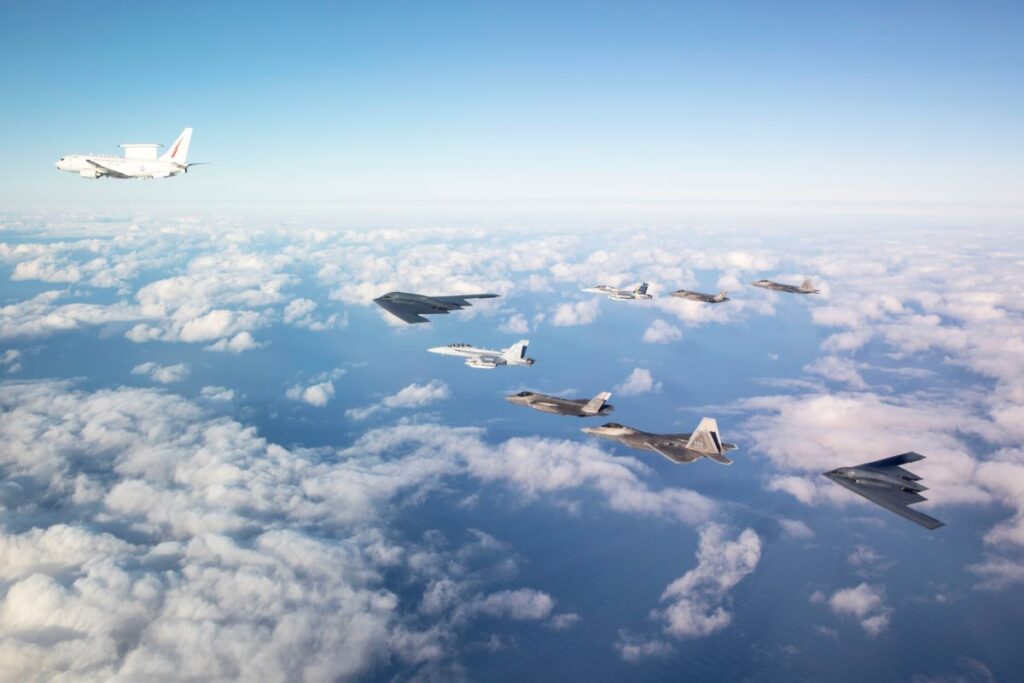
U.S. Air Force B-2 Spirit bombers and F-22 Raptors fly in formation with an Australian E-7A Wedgetail, EA-18G Growlers and F-35A Lightning II jets over Australia on Aug. 19, 2024 (Royal Australian Air Force Photo)
The U.S. Air Force is considering starting engineering and manufacturing development (EMD) in fiscal 2027 for upgrades to the Boeing E-7A Wedgetail, including a replacement of the Northrop Grumman Multi-Role Electronically Scanned Array (MESA) radar.
The Air Force “is seeking to initiate an EMD program in the FY27 time frame to develop and integrate an advanced sensor and potentially other capabilities onto the baseline E-7 platform, or an equivalent AMTI/BMC2 [airborne moving target indication/battle management command and control] platform,” according to an Apr. 15 Request for Information (RFI). “Following the EMD phase, the Government is considering retrofitting USAF E-7A aircraft with EMD modifications, producing new E-7 aircraft, or a combination of retrofit and new aircraft.”
Northrop Grumman said recently that the company, the Royal Australian Air Force (RAAF), and Boeing flight tested at RAAF Williamstown improved combat identification for MESA.
The Mitchell Institute for Aerospace Studies has advised the Air Force to add more than $5 billion in its fiscal 2026 budget request to buy 26 Wedgetails to replace the 16 E-3 AWACS planes “in hospice care.”
“The existing E-7A Rapid Prototyping (RP) program is intended as a speed-to-ramp effort to resolve urgent capability gaps existing within the E-3 Sentry fleet,” according to the Apr. 15 RFI. “The government intentionally did not include emerging new capabilities in the RP effort. The government is interested in identifying industry partners to provide cutting-edge capabilities and technologies, potentially to include an advanced sensor (MESA replacement), advanced infrared sensor, Electronic Support Measures replacement, Electronic Warfare Self-Protection replacement, Tactical Targeting Network Technology, Link 16 High Power Amplifier (HPA), Joint Worldwide Intelligence Communications System connectivity, Combat Identification, next-generation Tactical Data Link, advanced missile data link capabilities, and other next-generation AMTI, BMC2, Alternative Position, Navigation, and Timing, and/or communications technologies.”
The Air Force Sustainment Center at Tinker AFB, Okla., is examining reduction of AWACS support costs through the Diminishing Manufacturing Sources Replacement of Avionics for Global Operations and Navigation (DRAGON) effort.
DRAGON led to a reduction in the AWACS flight deck from four to three crew members “by eliminating the navigator position and incorporating a modern Flight Management System Suite with robust architecture,” including a modern flight management computer and large multi-function displays for flight and engine instruments, the Air Force has said.
A version of this story originally appeared in affiliate publication Defense Daily.